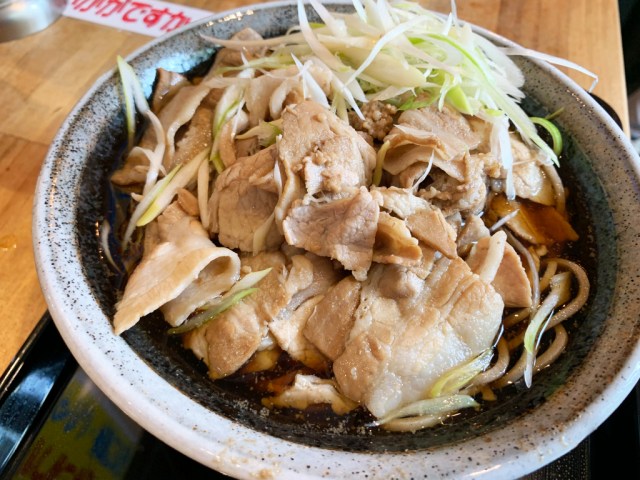
At a time when many small restaurants are going out of business, we speak to the manager of one that took the exact opposite approach.
While some of our staff take joy in tackling gargantuan food challenges, our Japanese-language correspondent Seiji Nakazawa is the resident connoisseur of stand-and-eat (“tachigui”) soba restaurants, having visited just shy 260 of them in Tokyo at this point. A restaurant called Nojiro recently became Seiji’s 269th stand-and-eat soba shop experience, but something special sets this one apart from all of the others he’s visited–the fact that it opened in the middle of a global pandemic when many eateries are suffering a loss of business.
Nojiro is close to Ekoda Station on the Seibu Ikebukuro Line. To get there, leave from the station’s North Exit and walk down a short street lined with shops.
Before long you’ll spy a new-looking wooden building–that’s Nojiro.
The large black banner by the door advertising its name is perhaps more reminiscent of a ramen restaurant than anything else, but underneath the name “stand-and-eat meat soba and meat udon” is clearly noted.
Any noodle dish on the menu could be ordered with either soba or udon noodles as the base. Sample items on the ticket machine include noodles with meat (pork) for 500 yen (US$4.60), plain noodles in broth for 300 yen, noodles with a croquette for 400 yen, and noodles with mixed vegetable and seafood tempura for 460 yen. These are definitely reasonable prices for a stand-and-eat soba shop.
Seiji decided to go for the meat soba and also ordered an extra serving of meat topping for an additional 150 yen. While waiting, he took note of a large bottle of chili oil on the table.
Before long a piping hot bowl of noodles was placed in front of him. He took one look at it…
…and thought to himself, “HOLY COW! Look at all that pork!”
While he had indeed ordered extra meat, he couldn’t even see the noodles underneath it all. Was it a noodle dish with meat, or a meat dish with noodles?
After taking a bite he noted that the pork was delightfully tender and juicy. Its flavor also seeped out into the broth, deepening the flavor and adding a natural sweet and salty edge to it. The broth itself was prepared using a special dashi stock made of frigate tuna, mackerel, and kombu, as he later found out.
He tried adding a little of the chili oil he had spied earlier. It added a tingling spiciness and intensified all of the flavors.
In a way it almost made the soba noodles lose their unique buckwheat taste, so he would probably pass on the oil next time.
The noodles were pleasantly plump. Taking into account the portion size, quality of the meat, and price as well, it was an all-around solid bowl of soba.
At that point Seiji ventured to chat a bit with the manager, Mr. Mitsuda. He was particularly curious to hear more about the opening of the restaurant just a few months ago.
Seiji: “Does Nojiro have any sister restaurants?”
Mr. Mitsuda: “Well, the owner runs a Chinese-style restaurant over in Itabashi [a neighboring district of Tokyo] called ‘Jiro’s Table.’ This is his first stand-and-eat soba restaurant.”
Seiji: “Even if it’s the first, it’s incredibly delicious. Had you ever worked at a soba restaurant before this?”
Mr. Mitsuda: “Thank you. Actually, I perfected this flavor while working at Den Soba in Kodemmacho and Nakajima Shoten in Itabashi.”
Seiji: “Ten Soba, huh–that’s nostalgic [Ten Soba was the 142nd stand-and-eat soba shop that Seiji visited]. On a different note, why did you open this restaurant smack in the middle of the pandemic?”
Mr. Mitsuda: “The owner had always wanted to open a stand-and-eat soba restaurant. As part of our initial research, the two of us went around sampling various similar places, especially the one-man operations. While doing so, we saw several that were absolutely thriving. We thought that this could be a success even at a time like this.”
It sounded to Seiji like they had taken a leap of faith, but also one of confidence, in their undertaking. The place was certainly bustling when he visited at lunchtime and it had already gathered a devoted regular crowd. He attributed its success during the pandemic to a variety of factors including its fast service, relatively hygienic physical setting (no sitting means no unnecessary post-meal lingering, after all), and cheap prices.
Restaurant information
Nojiro / のじろう
Address: Tokyo-to, Nerima-ku, Kotake-cho 1-57-5
東京都練馬区小竹町1-57-5
Open 8 a.m.-7 p.m.
Closed Sundays
All images © SoraNews24
● Want to hear about SoraNews24’s latest articles as soon as they’re published? Follow us on Facebook and Twitter!
[ Read in Japanese ]

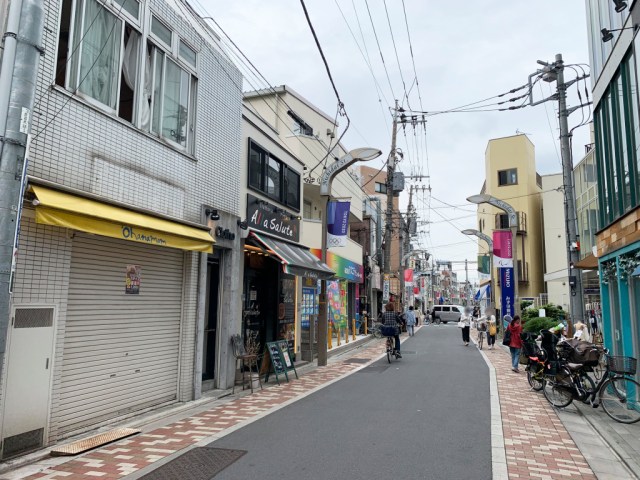

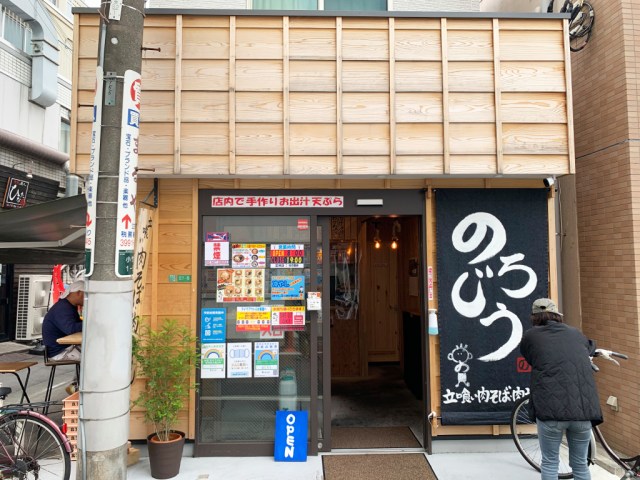
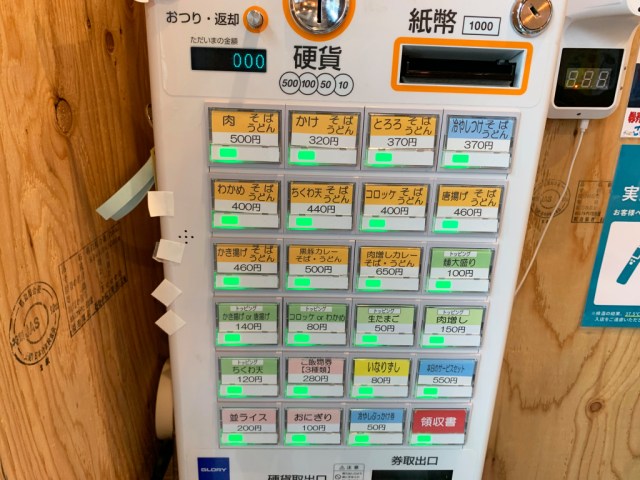
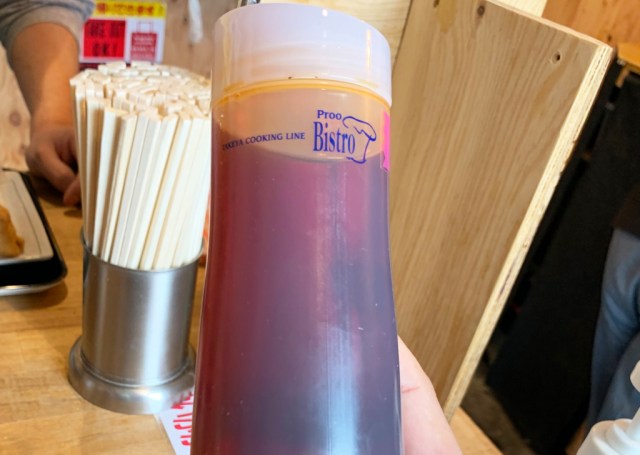

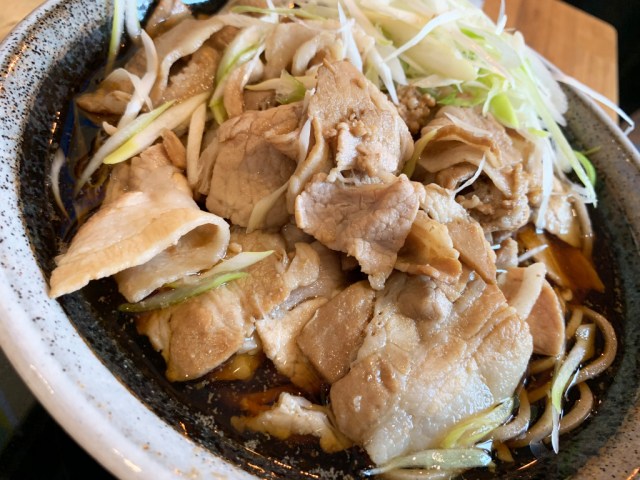
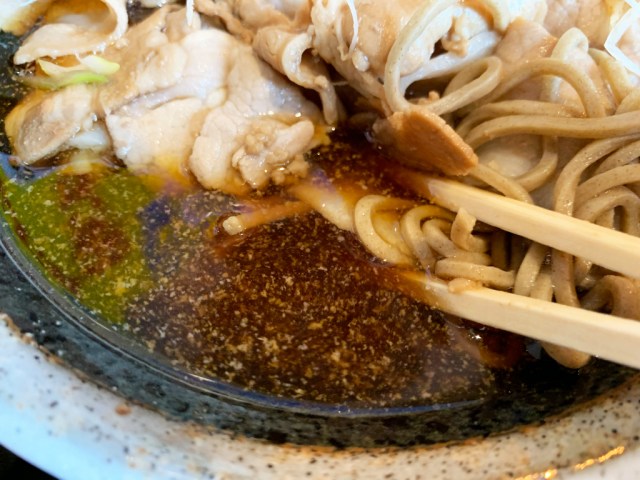
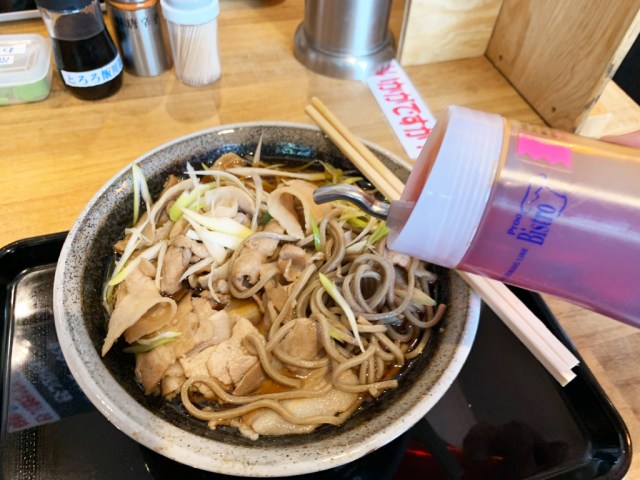
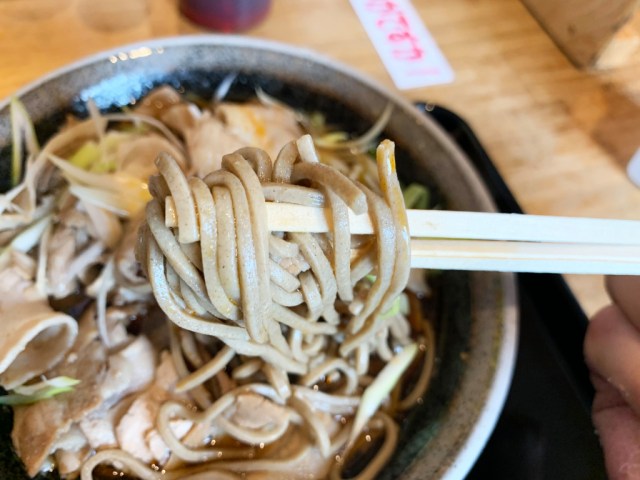
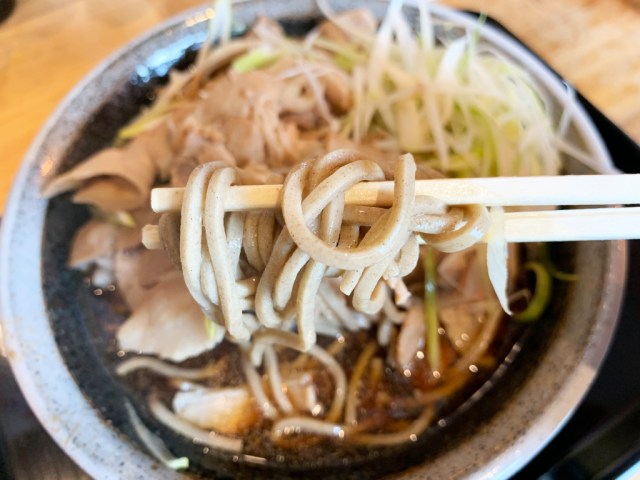
 We serve a hot dish of the five best stand-and-eat soba restaurants in one area of Tokyo
We serve a hot dish of the five best stand-and-eat soba restaurants in one area of Tokyo The top nine stand-and-eat soba noodle restaurants in Tokyo
The top nine stand-and-eat soba noodle restaurants in Tokyo Japanese restaurant chain serves up super thick soba noodles in Tokyo
Japanese restaurant chain serves up super thick soba noodles in Tokyo Shibuya City Office serves up insanely cheap soba noodles, but are they any good?
Shibuya City Office serves up insanely cheap soba noodles, but are they any good? Tokyo Secret Eats: Shibuya City staff cafeteria serves Hachiko soba to visitors
Tokyo Secret Eats: Shibuya City staff cafeteria serves Hachiko soba to visitors Japan now has potato chip-covered chocolate, and it’s amazing!【Taste test】
Japan now has potato chip-covered chocolate, and it’s amazing!【Taste test】 Japanese beef bowl chain Sukiya’s 2026 Smile Box lucky bag basically pays for itself
Japanese beef bowl chain Sukiya’s 2026 Smile Box lucky bag basically pays for itself Here are five incredible places to add to your itinerary on a visit to Shimane’s Izumo City
Here are five incredible places to add to your itinerary on a visit to Shimane’s Izumo City Become your favorite animal with these realistic onesies, complete with pullover masks
Become your favorite animal with these realistic onesies, complete with pullover masks 7 great places to see Mt. Fuji from without having to climb it
7 great places to see Mt. Fuji from without having to climb it Ayato Nikukyu, one of Japan’s hottest cosplayers, visits RocketNews24 for an exclusive interview
Ayato Nikukyu, one of Japan’s hottest cosplayers, visits RocketNews24 for an exclusive interview Hachiko’s new statue is now open to the public, and we’ve got pictures and video from our visit
Hachiko’s new statue is now open to the public, and we’ve got pictures and video from our visit What if Sailor Moon characters were lingerie models? They’d look stunning like this 【Photos】
What if Sailor Moon characters were lingerie models? They’d look stunning like this 【Photos】 Four Shinto shrines to pray for love at in Japan to start the New Year
Four Shinto shrines to pray for love at in Japan to start the New Year Matcha ice cream used to encourage young people to vote in upcoming Japanese election
Matcha ice cream used to encourage young people to vote in upcoming Japanese election Starbucks Japan ready to get Year of the Horse started with adorable drinkware and plushies【Pics】
Starbucks Japan ready to get Year of the Horse started with adorable drinkware and plushies【Pics】 Hayao Miyazaki says Happy New Year to Studio Ghibli fans with new art for Year of the Horse
Hayao Miyazaki says Happy New Year to Studio Ghibli fans with new art for Year of the Horse We found possibly the quietest Japanese-style hotel in Tokyo’s bustling Shinjuku district
We found possibly the quietest Japanese-style hotel in Tokyo’s bustling Shinjuku district Cup Noodle tries an authentic Jiro-style ramen, but something’s not quite right
Cup Noodle tries an authentic Jiro-style ramen, but something’s not quite right The best Starbucks Japan Frappuccinos we want to drink again in 2026
The best Starbucks Japan Frappuccinos we want to drink again in 2026 We revisited Sweets Paradise after a decade to see if Japan’s dessert buffet still delivers
We revisited Sweets Paradise after a decade to see if Japan’s dessert buffet still delivers That time Seiji called JASRAC to ask why he didn’t get paid royalties for his song being on TV
That time Seiji called JASRAC to ask why he didn’t get paid royalties for his song being on TV Japan’s oldest largetooth sawfish in captivity back on display in Mie Prefecture
Japan’s oldest largetooth sawfish in captivity back on display in Mie Prefecture Pizza Hut Japan’s hot lucky bags are perfect for a New Year’s pizza party
Pizza Hut Japan’s hot lucky bags are perfect for a New Year’s pizza party 7-Eleven Japan starts new temporary luggage storage service in over 300 branches
7-Eleven Japan starts new temporary luggage storage service in over 300 branches Disillusionment at Tsukiji’s tourist-target prices led us to a great ramen restaurant in Tokyo
Disillusionment at Tsukiji’s tourist-target prices led us to a great ramen restaurant in Tokyo Starbucks teams up with 166-year-old Kyoto doll maker for Year of the Horse decorations【Photos】
Starbucks teams up with 166-year-old Kyoto doll maker for Year of the Horse decorations【Photos】 Tokyo considering law requiring more trash cans following litter increase in heavily touristed area
Tokyo considering law requiring more trash cans following litter increase in heavily touristed area Tokyo’s Tsukiji sushi neighborhood asks tour groups to stay away for the rest of the month
Tokyo’s Tsukiji sushi neighborhood asks tour groups to stay away for the rest of the month Tokyo event lets you travel back in time, for free, to celebrate 100 years since Showa era start
Tokyo event lets you travel back in time, for free, to celebrate 100 years since Showa era start Japan may add Japanese language proficiency, lifestyle classes to permanent foreign resident requirements
Japan may add Japanese language proficiency, lifestyle classes to permanent foreign resident requirements Sanrio theme park in Japan announces plans to expand into a Sanrio resort
Sanrio theme park in Japan announces plans to expand into a Sanrio resort Stamina-destroying “Paralysis Noodles” are Tokyo’s newest over-the-top ramen innovation
Stamina-destroying “Paralysis Noodles” are Tokyo’s newest over-the-top ramen innovation Survey asks foreign tourists what bothered them in Japan, more than half gave same answer
Survey asks foreign tourists what bothered them in Japan, more than half gave same answer Japan’s human washing machines will go on sale to general public, demos to be held in Tokyo
Japan’s human washing machines will go on sale to general public, demos to be held in Tokyo Japan’s deadliest food claims more victims, but why do people keep eating it for New Year’s?
Japan’s deadliest food claims more victims, but why do people keep eating it for New Year’s? We deeply regret going into this tunnel on our walk in the mountains of Japan
We deeply regret going into this tunnel on our walk in the mountains of Japan Studio Ghibli releases Kodama forest spirits from Princess Mononoke to light up your home
Studio Ghibli releases Kodama forest spirits from Princess Mononoke to light up your home Major Japanese hotel chain says reservations via overseas booking sites may not be valid
Major Japanese hotel chain says reservations via overseas booking sites may not be valid Put sesame oil in your coffee? Japanese maker says it’s the best way to start your day【Taste test】
Put sesame oil in your coffee? Japanese maker says it’s the best way to start your day【Taste test】 No more using real katana for tourism activities, Japan’s National Police Agency says
No more using real katana for tourism activities, Japan’s National Police Agency says Starbucks Japan reveals new sakura drinkware collection, inspired by evening cherry blossoms
Starbucks Japan reveals new sakura drinkware collection, inspired by evening cherry blossoms Updated cherry blossom forecast shows extra-long sakura season for Japan this year
Updated cherry blossom forecast shows extra-long sakura season for Japan this year Japanese train station noodle restaurant with 122-year history closes
Japanese train station noodle restaurant with 122-year history closes Mega meat noodles in Tokyo: 2.6 pounds of meat, one bowl of soba, no regrets【Video】
Mega meat noodles in Tokyo: 2.6 pounds of meat, one bowl of soba, no regrets【Video】 Osaka street food becomes a Tokyo noodle topping with the Deluxe Takoyaki Soba【Taste test】
Osaka street food becomes a Tokyo noodle topping with the Deluxe Takoyaki Soba【Taste test】 Tokyo restaurant doesn’t tell you its name unless you ask, makes us appreciate life’s surprises
Tokyo restaurant doesn’t tell you its name unless you ask, makes us appreciate life’s surprises Old soba restaurant on Japanese train station platform serves noodles with a side of nostalgia
Old soba restaurant on Japanese train station platform serves noodles with a side of nostalgia The deluxe disappointment and basic brilliance of Japan’s oldest standing soba noodle chain
The deluxe disappointment and basic brilliance of Japan’s oldest standing soba noodle chain A delicious bowl of Osaka soba stuffed with tempura shrimp that’s also an edible pun
A delicious bowl of Osaka soba stuffed with tempura shrimp that’s also an edible pun We find “Yakushima Soba” on a mysterious menu at a souvenir shop at Yakushima Island’s airport
We find “Yakushima Soba” on a mysterious menu at a souvenir shop at Yakushima Island’s airport We eat at the legendary Negidon, a Tokyo soba restaurant that’s only open for lunch on weekdays
We eat at the legendary Negidon, a Tokyo soba restaurant that’s only open for lunch on weekdays What does a family restaurant in the middle of nowhere, Hokkaido, serve? We find out
What does a family restaurant in the middle of nowhere, Hokkaido, serve? We find out Starbucks adds Japanese soba noodles to its menu…in Hong Kong?!?【Taste test】
Starbucks adds Japanese soba noodles to its menu…in Hong Kong?!?【Taste test】 We try cooking yakisoba with real Japanese buckwheat soba【SoraKitchen】
We try cooking yakisoba with real Japanese buckwheat soba【SoraKitchen】 Kakiage towers and Italian soba? We try out a unique soba restaurant in Tokyo
Kakiage towers and Italian soba? We try out a unique soba restaurant in Tokyo Saga Prefecture’s hidden gem of a soba restaurant offers scrumptious, full course soba meals
Saga Prefecture’s hidden gem of a soba restaurant offers scrumptious, full course soba meals Japan’s first-ever wanko soba conveyor belt restaurant opens in Tokyo
Japan’s first-ever wanko soba conveyor belt restaurant opens in Tokyo
Leave a Reply